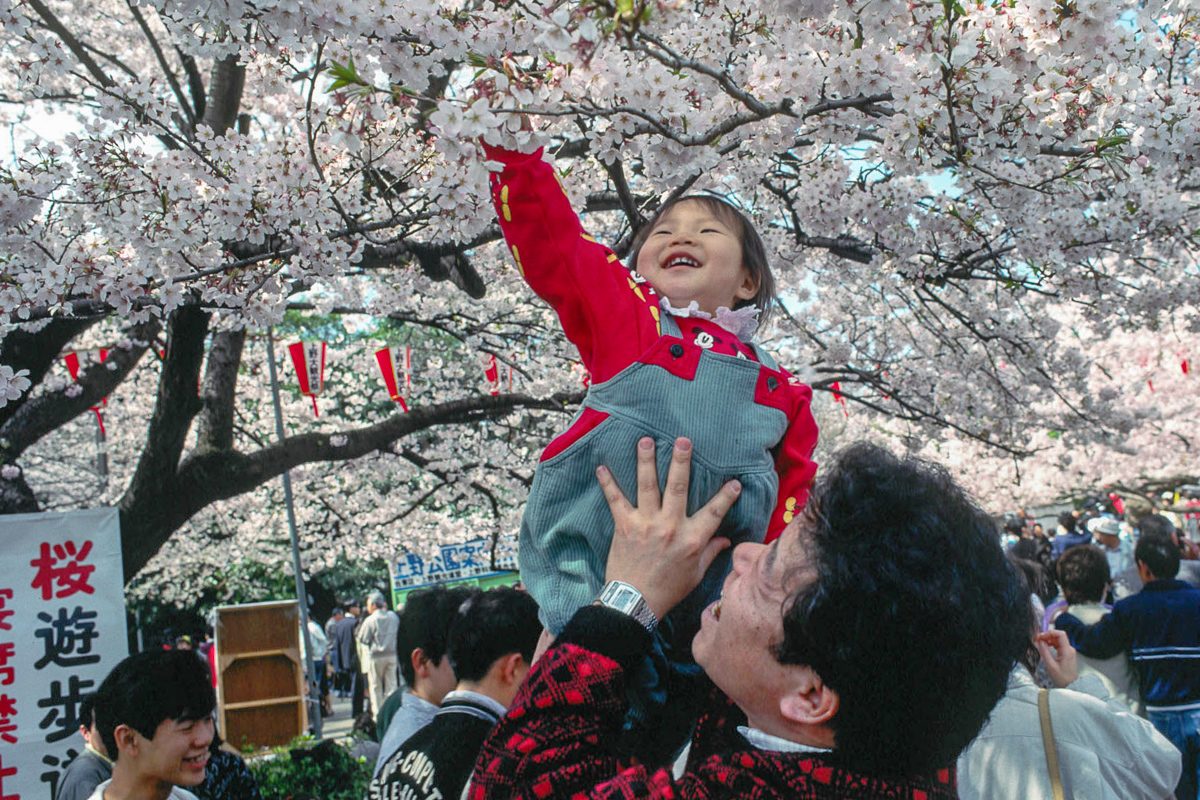Every year at the beginning of spring, the cherry blossoms turn Japan upside down for a few weeks. While the whole country transforms into a pink-white sea of cherry blossoms, the Japanese celebrate the blooming with their families, friends and colleagues in the open air with a so-called Hanami.
Since February is the coldest month in Japan, the time of cherry blossom marks a highlight in the Japanese calendar. At the end of March, the whole country turns into a pink-white sea of cherry blossoms, as almost half of all trees in Japanese cities are cherry trees. It is not without a reason why the time of cherry blossom is a preferred holiday and travel season in Japan.
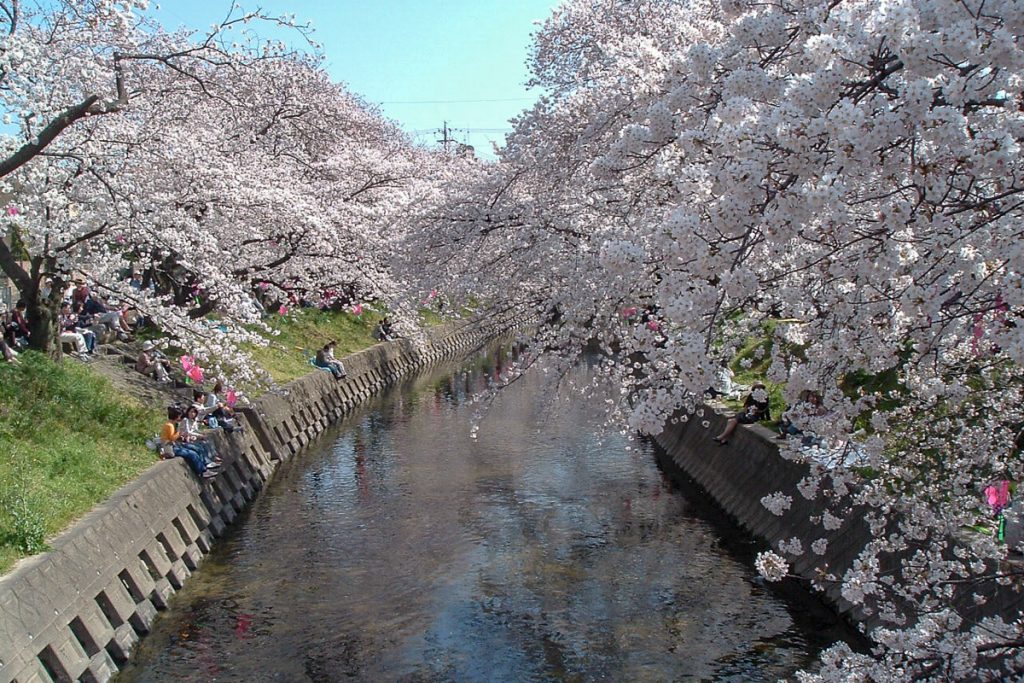
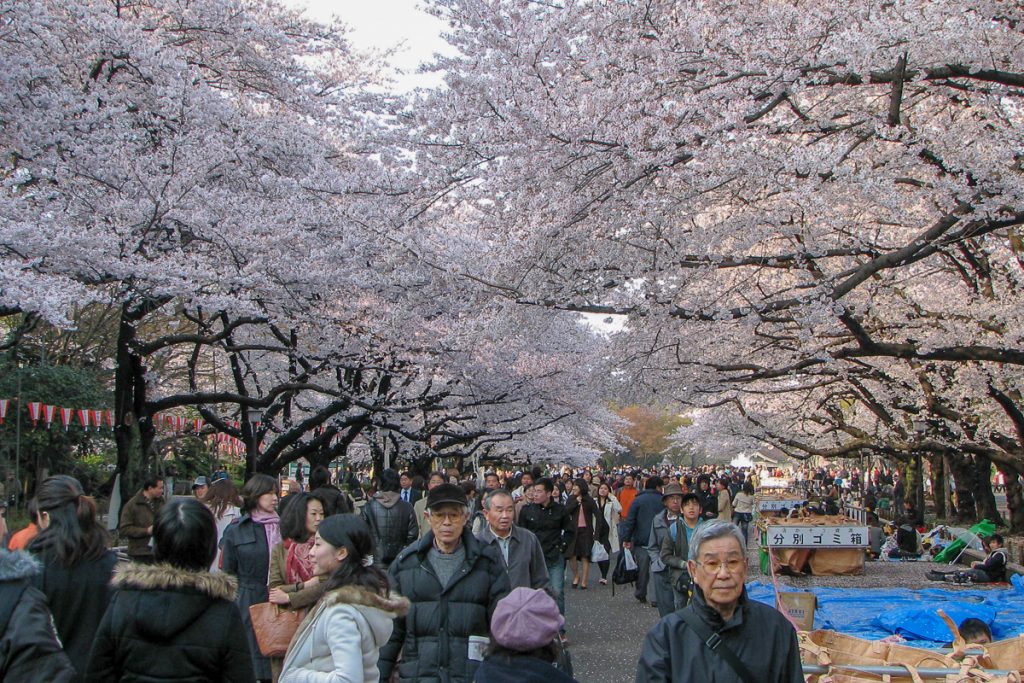
The cherry blossoms in Japanese media
In fact, the widely cultivated Japanese cherry blossom called “sakura” is in bloom from late March to early May, depending on the region in Japan. The short flowering period of only a few weeks is well-received by the Japanese media. During this time, the weather forecast announces the “cherry blossom front” and reports on the current degree of flower opening in the various regions. Typically, most Japanese hold a Hanami during the full opening of the flower called “mankai”.
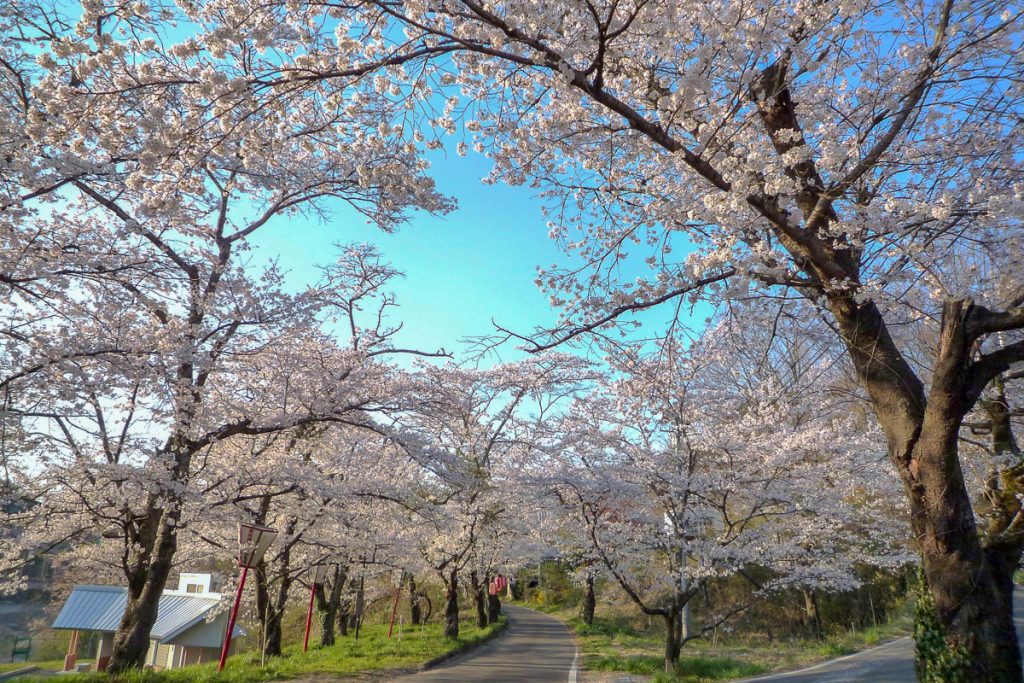
Hanami: a tradition with a long symbolic history
Hanami, the festivity of the cherry blossom, is a tradition that has existed in Japan since the 8th century and goes back to the Nara period (710-794). The cherry blossom is one of the most important symbols in Japanese culture, especially in Japanese poetry. It is associated with beauty, awakening and transience, since the Japanese cherry does not bear fruit and only lives for the purpose of beauty blossoming for a few days a year. Until today, women wear the traditional kimono to honour the cherry blossom.
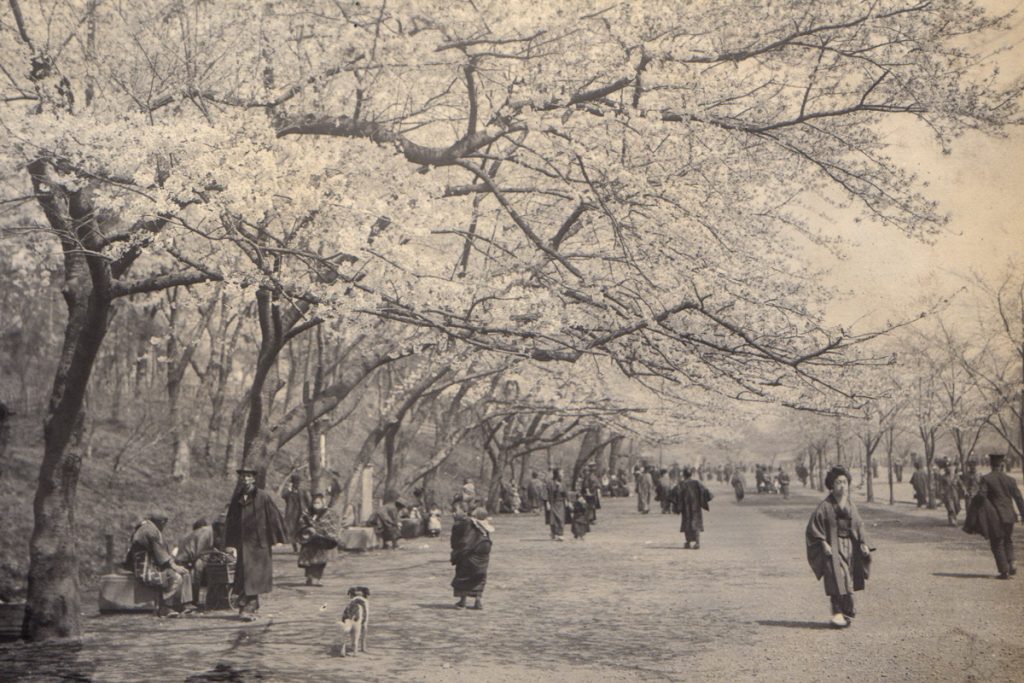

Celebrating a Hanami together in the park with family and friends
Most Japanese celebrate a Hanami with friends, colleagues and family in the open air in parks, sitting cross-legged under trees and serving various home-made specialities in Bentō boxes as well as beer and sake. Some people even bring instruments and play music for friends and relatives. Since the atmosphere is cheerful and happy, a Hanami is a good opportunity to get in touch with the locals.
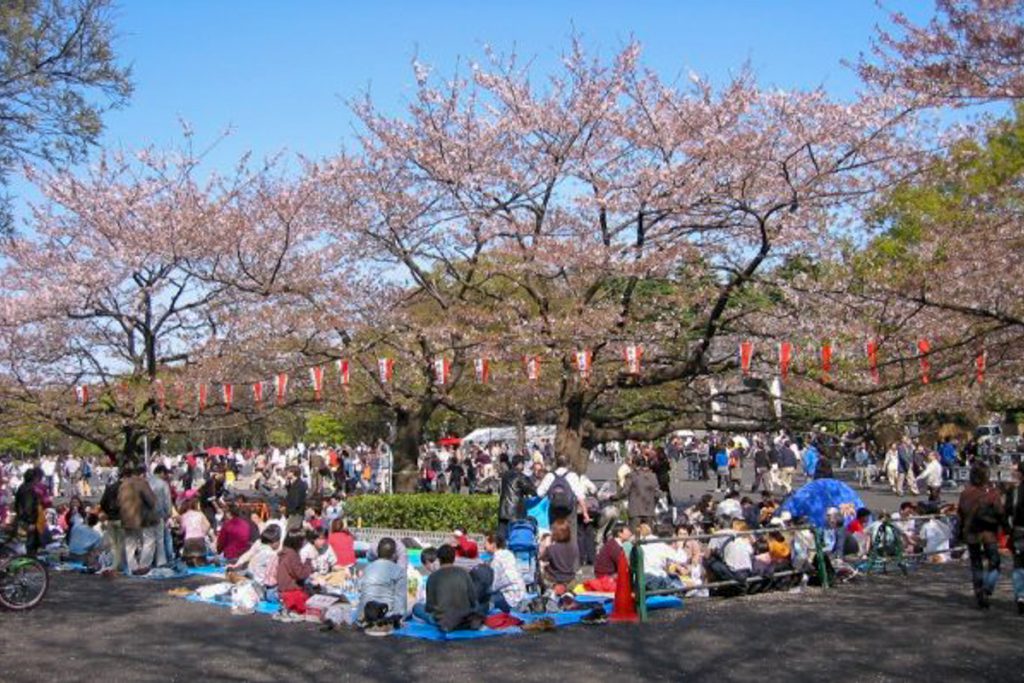
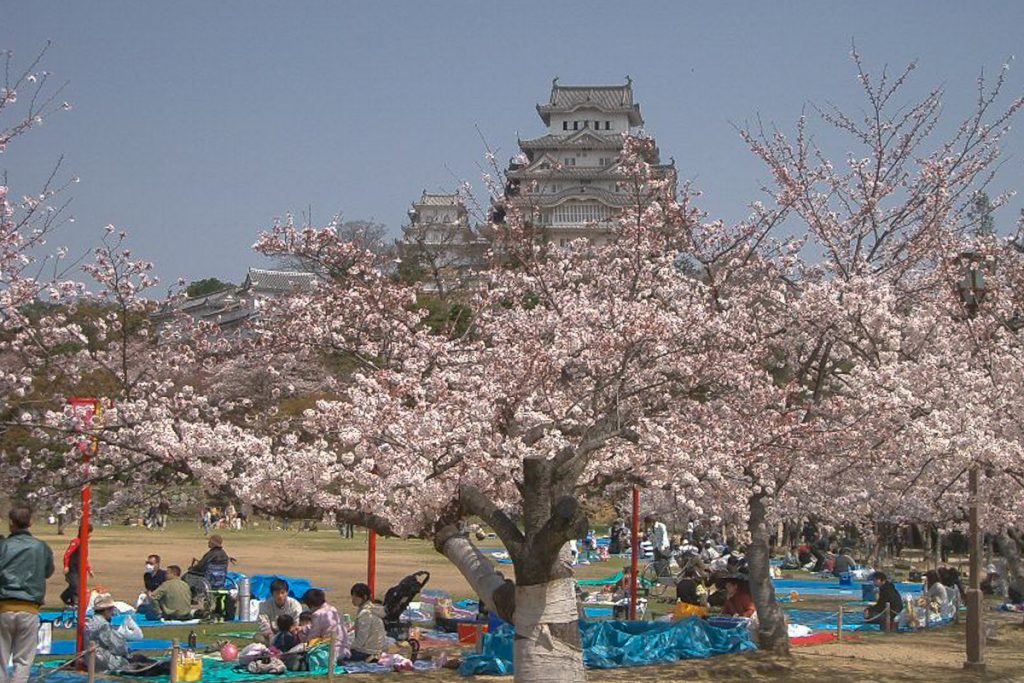
Particularly characteristic are the large blue plastic films, which are brought along for a reason. Even in good weather, only one or two weekends are suitable for this time of year to sit outside. In order to get the best places on weekends, one person per group is sent to the park at noon in advance to reserve a good place with the help of the film.
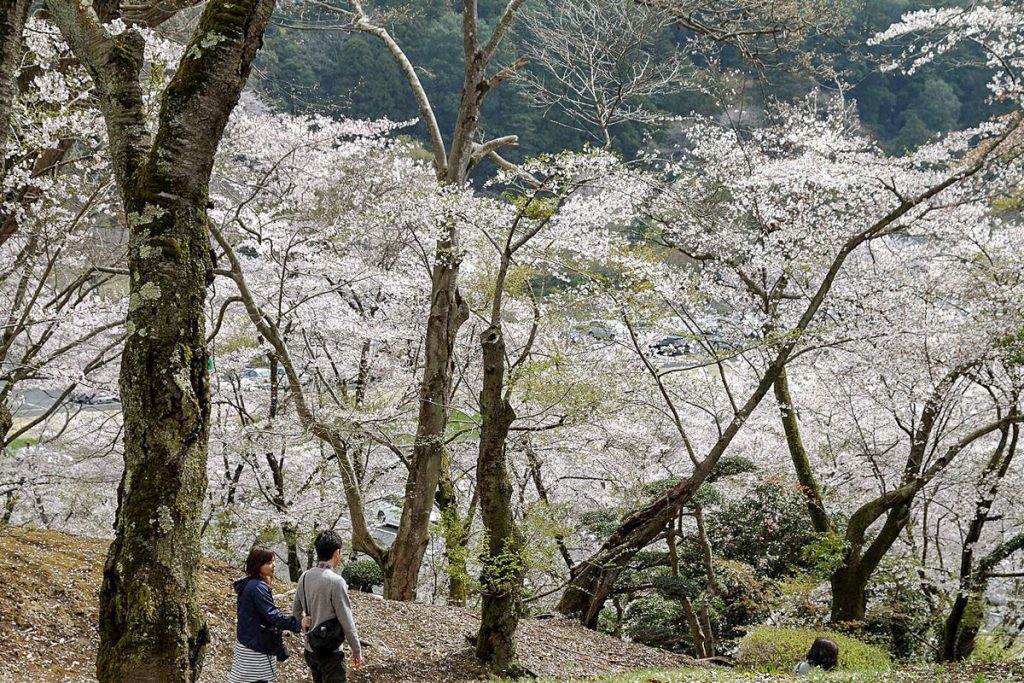
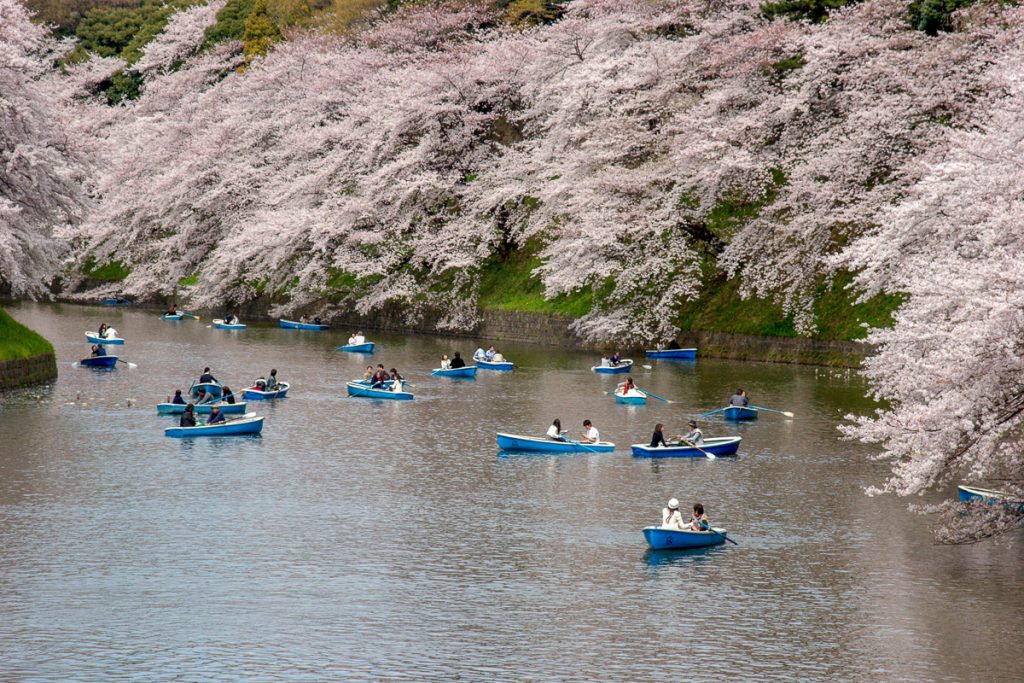
Besides, walks under flowery trees and paddling trips where the trees extend far into the lake are popular activities. There are numerous stalls serving traditional dishes such as Japanese egg pizza or fried buckwheat noodles with soy sauce.

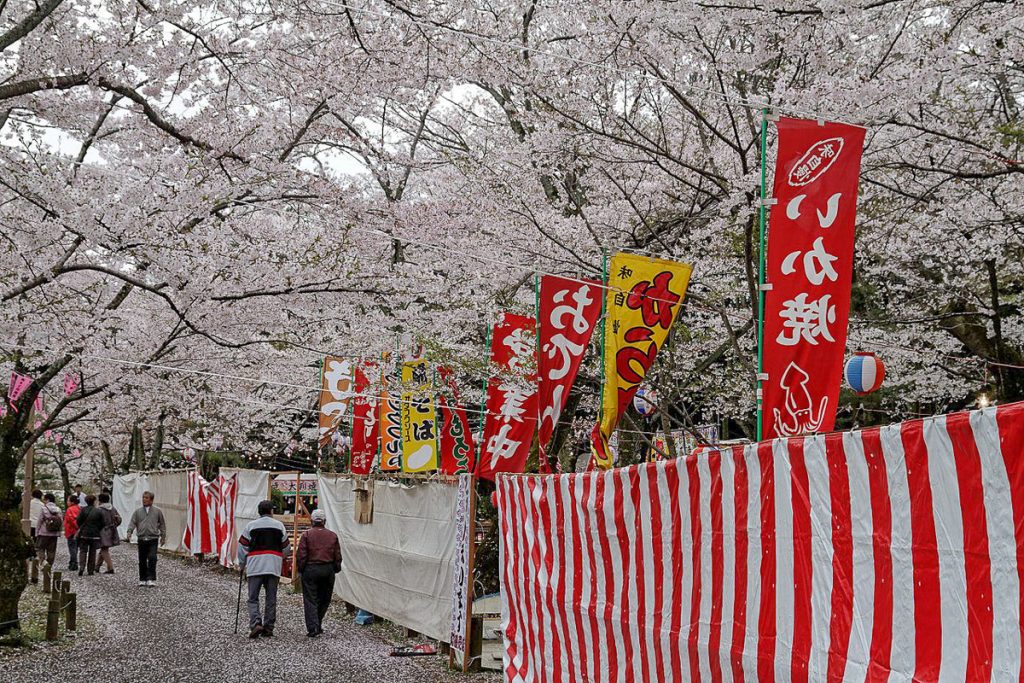
Hanami is popular with colleagues and students after work
The festivities have no time limit. Hanami is especially popular with colleagues and students in the evening after work. In some parks, the cherry trees are even specially illuminated for this purpose, with the white and light pink flowers forming a beautiful contrast to the darkness of the night.
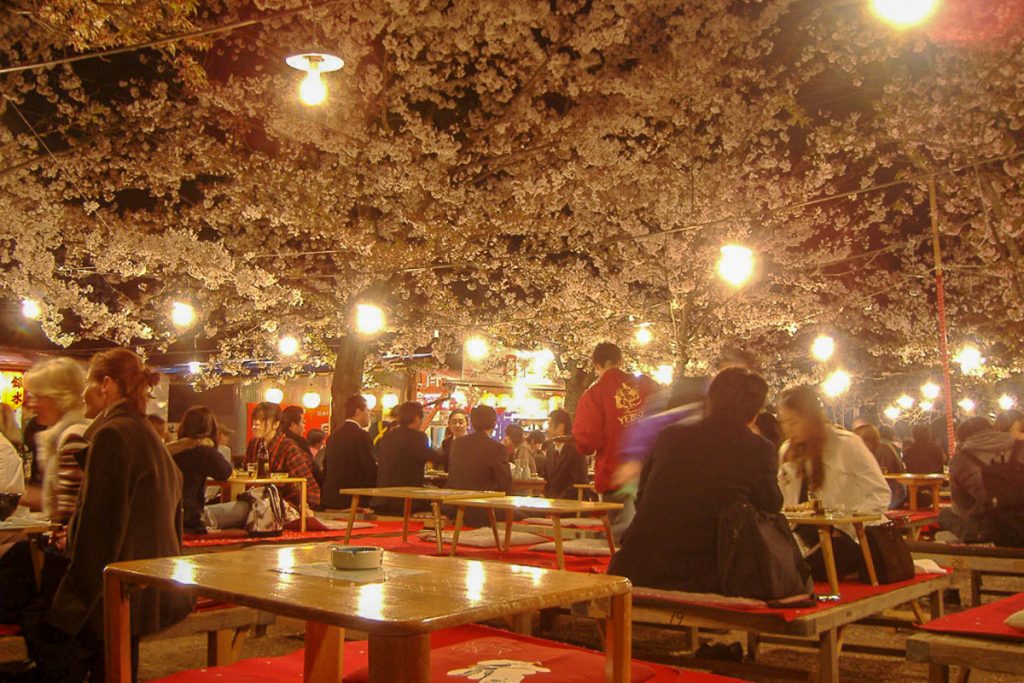

But everything is coming to an end. If the flowers dry out after a short time or fall due to snow or rain shower, the festival ends. But only until next year, when a new “cherry blossom front” appears.
Photo credits
“Qurren (talk)” CC BY-SA 3.0, “A.Davey” CC BY 2.0, “Kimon Berlin” CC BY-SA 2.0, “Wikipedia” CC BY-SA 3.0, “DL5MDA” CC BY-SA 3.0, “KimonBerlin” CC BY-SA 2.0, “KimonBerlin” CC BY-SA 2.0, “Kimon Berlin” CC BY-SA 2.0, “Kimon Berlin” CC BY-SA 2.0, “ccfarmer” CC BY 3.0, “Flickr” CC BY 2.0, “Bernard Gagnon” CC BY-SA 3.0, “Oliver Mayer” CC BY-SA 3.0

